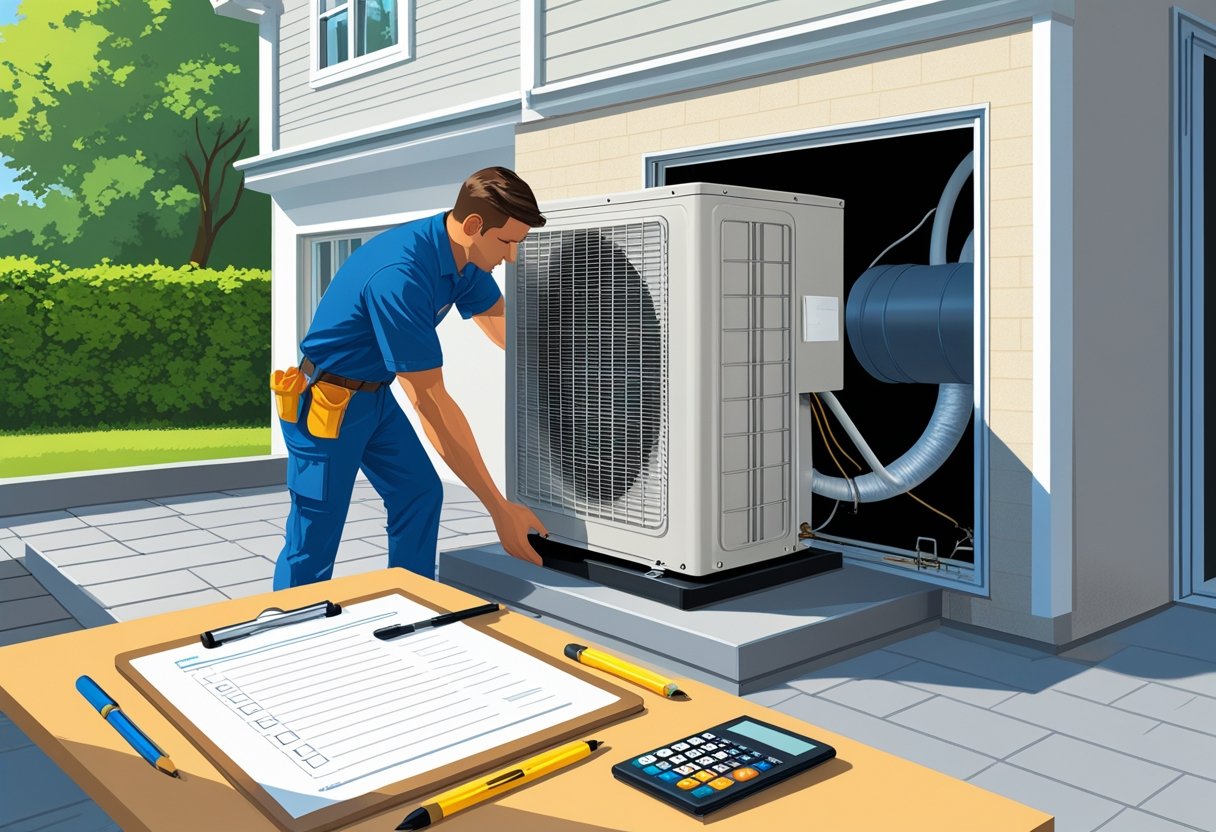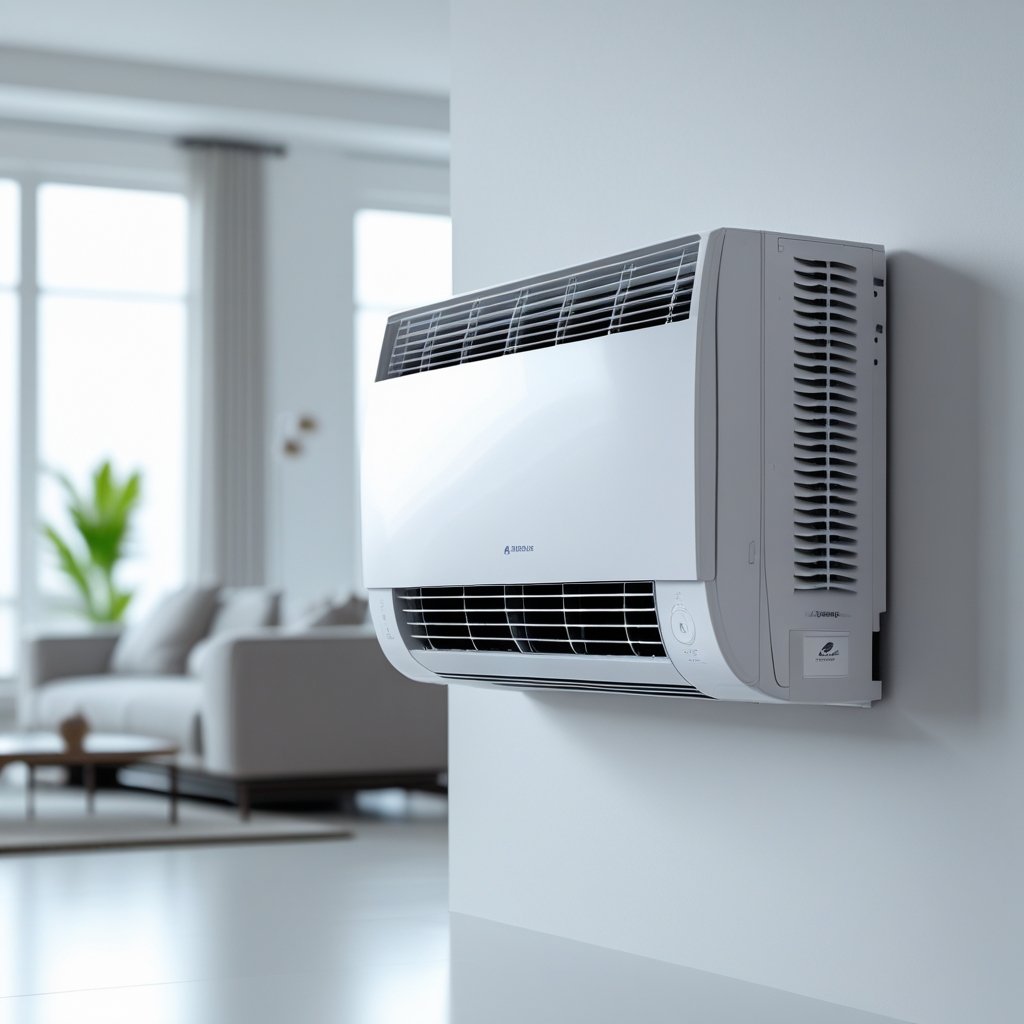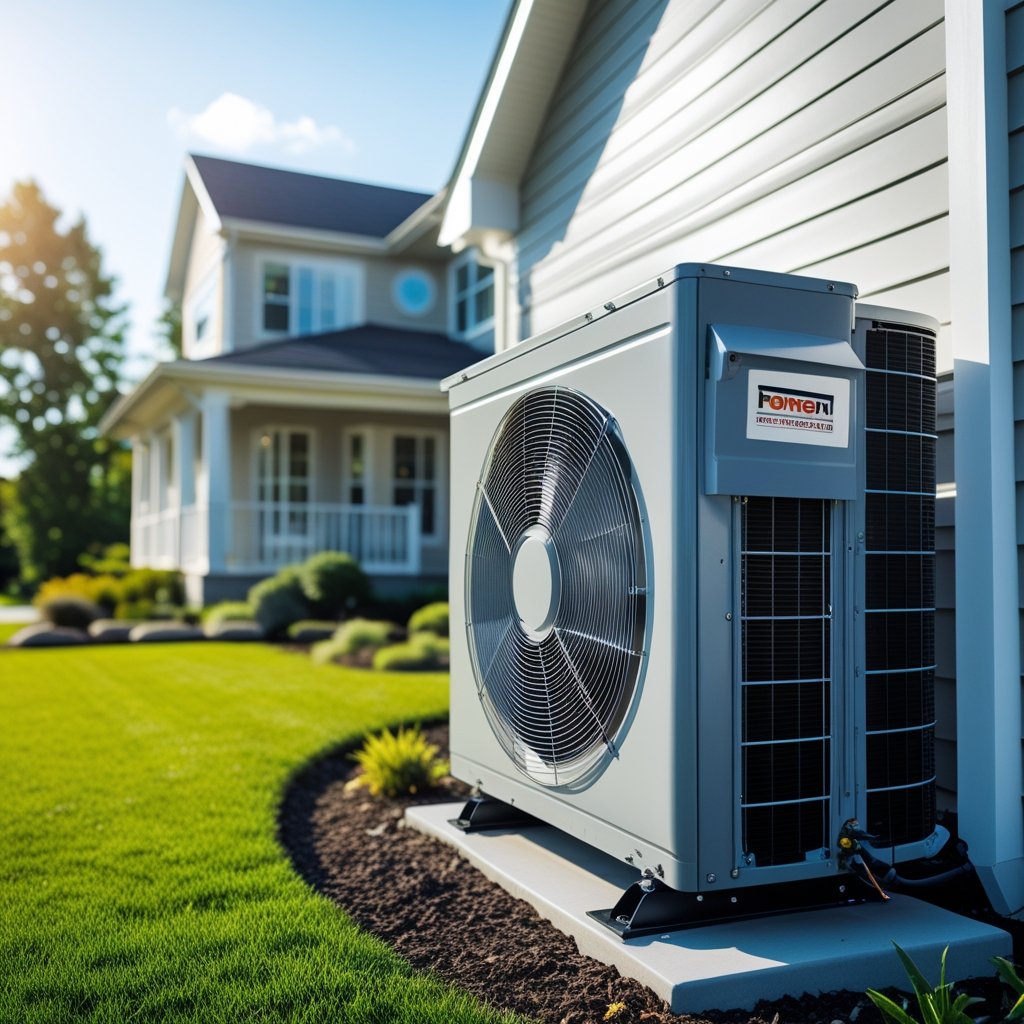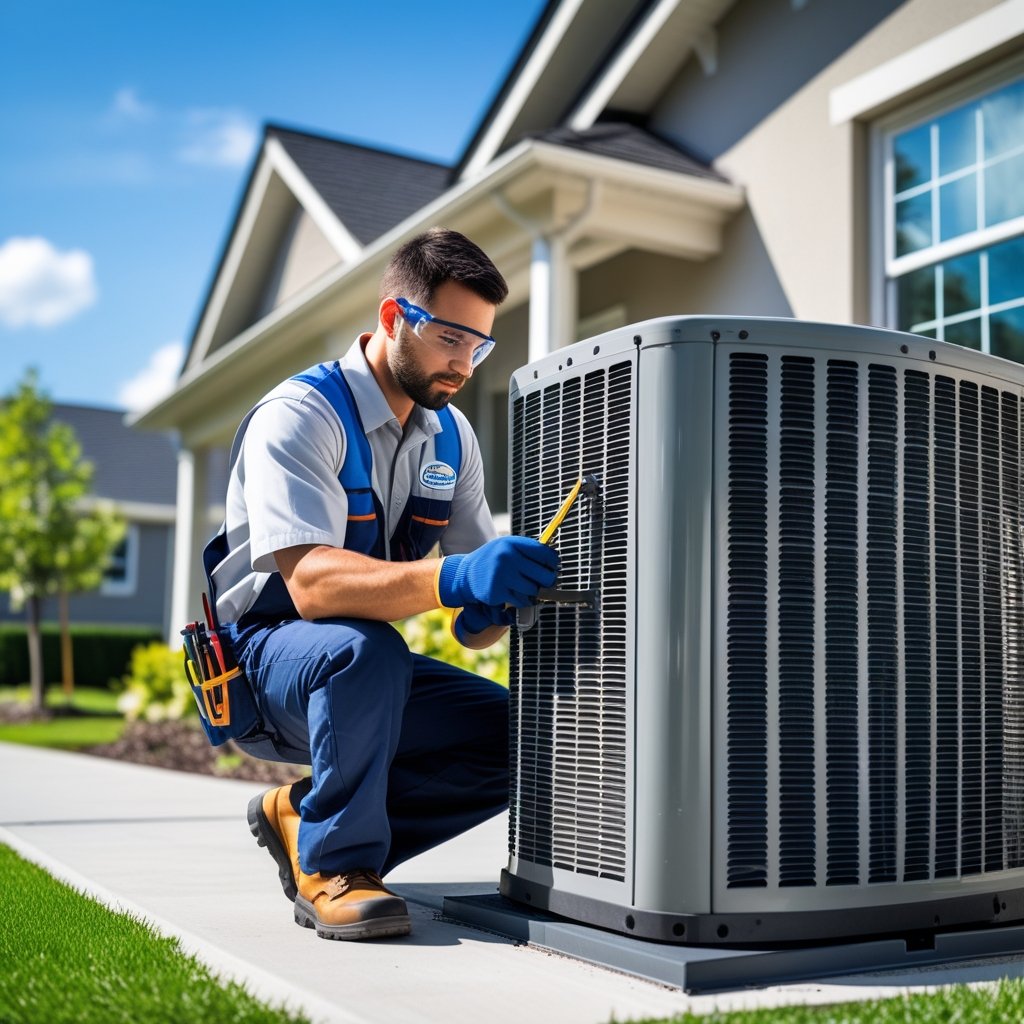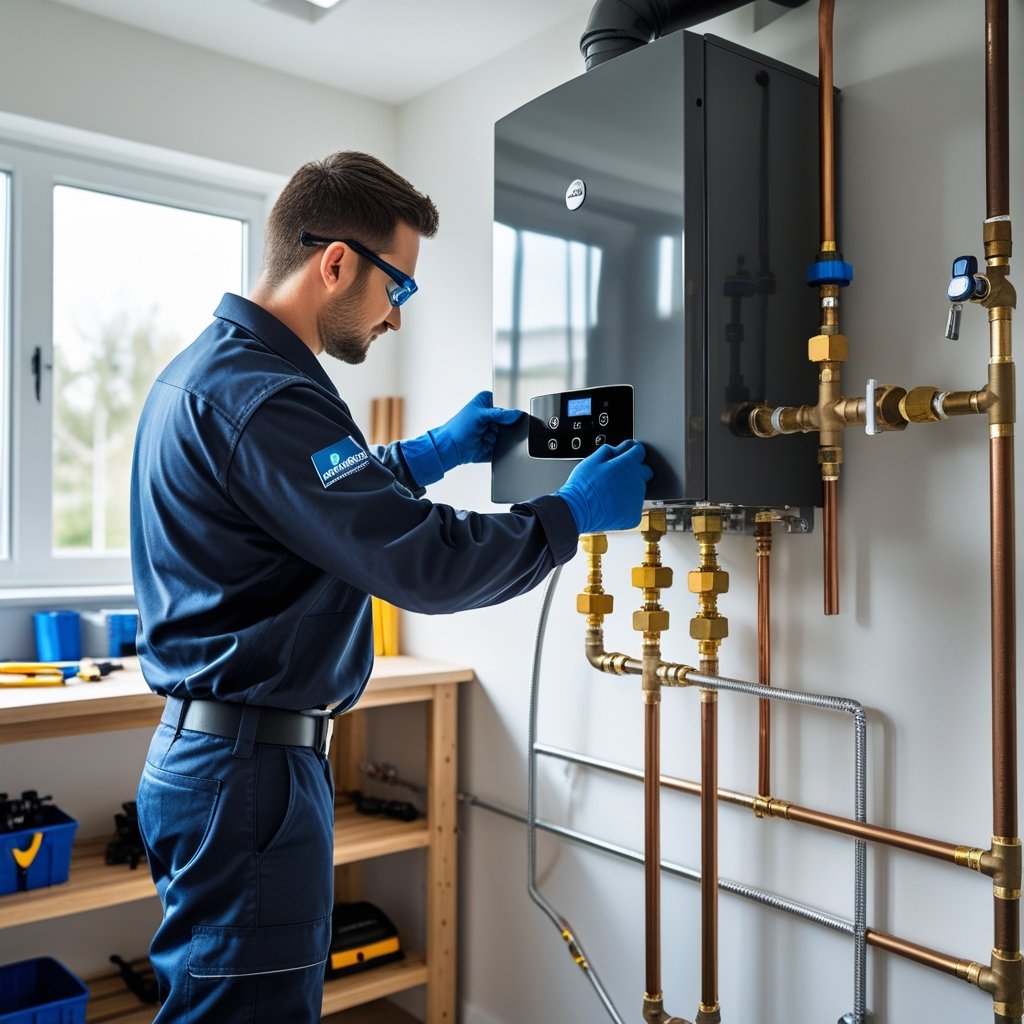Installing central air conditioning can significantly enhance your home’s comfort, especially during the warmer months. The average cost to install central AC ranges between $5,000 and $12,000, depending on factors like unit size, labor, and additional installation requirements. This investment not only cools your living space but also improves air quality and energy efficiency.
At Leo Kob Co., we understand that choosing the right system and knowing the associated costs can feel overwhelming. You can rely on our experienced team to provide transparent pricing and quality service, ensuring you receive a solution tailored to your home’s specific needs.
As a family-owned business serving South Central Pennsylvania since 1904, we prioritize customer satisfaction and integrity. With our expertise in HVAC systems, you can make informed decisions about your cooling needs, keeping your home comfortable for years to come.
Understanding Central AC and Installation Costs
Central air conditioning is a vital component for keeping your home comfortable during warm months. Knowing how these systems function and the types available can help you make informed choices about installation costs.
What Is Central Air Conditioning?
Central air conditioning systems distribute cool air throughout your home via a network of ducts. They differ from window or portable units, which only cool specific areas. A central AC unit typically consists of an outdoor condenser and an indoor air handler. This setup enables consistent temperature control across multiple rooms, enhancing overall comfort and energy efficiency.
How Central AC Systems Work
Central AC systems operate using a cycle of refrigerant to absorb and expel heat. The process begins when the thermostat signals the system to start cooling. The outdoor unit extracts heat from the indoor air, cooling it as the refrigerant circulates. This cooled air is then distributed through the ductwork into various rooms. Additionally, the system also filters the air, removing dust and allergens, which contributes to improved indoor air quality. Regular maintenance, including filter changes and system checks, can help ensure optimal performance.
Types of Central AC Units
Various types of central air conditioning systems cater to different needs. Here are the main options:
- Standard Central AC: Typically consists of a split system with both indoor and outdoor components.
- Packaged Systems: These systems house all components in one unit, ideal for homes without space for an indoor component.
- Ductless Mini-Split Systems: These are suitable for homes without existing ductwork and allow for zoned heating and cooling.
Choosing between these options depends on your home's layout, existing infrastructure, and efficiency preferences. If you're unsure which system suits you best, consulting experts like Leo Kob Co. can provide tailored solutions.
Key Factors Affecting Central AC Installation Cost
When considering the installation of a central air conditioning system, several key factors can significantly influence the overall costs. Understanding these elements can help you make informed decisions about your investment.
Home Size and Cooling Needs
The size of your home directly impacts the cooling capacity required from your central AC system. Larger homes generally need systems with higher BTUs (British Thermal Units) to maintain comfortable temperatures. A specialized calculation, known as a Manual J load calculation, can determine your exact cooling needs based on factors such as the layout, insulation, and climate.
For instance, a home with high ceilings or large windows may require additional cooling power. Planning for home size and specific cooling needs is essential to avoid overspending on equipment that exceeds your requirements.
Unit Size and BTU Requirements
Choosing the correct unit size is crucial for efficient operation. Central AC units are rated by their BTU capacity, which indicates how much heat they can remove from your home. If the unit is too small, it will struggle to cool your space, leading to increased energy costs and reduced comfort.
Conversely, an oversized system can cycle on and off frequently, causing wear and tear without efficiently dehumidifying your home. Accurate assessment of your BTU requirements will ensure long-term efficiency and comfort throughout your living spaces.
SEER Rating and Energy Efficiency
The Seasonal Energy Efficiency Ratio (SEER) measures the efficiency of your AC unit. A higher SEER rating indicates a more energy-efficient system, which can lower your utility bills over time. In 2025, the average SEER rating for new units ranges from 14 to 20.
Investing in a unit with a higher SEER rating may have higher upfront costs, but the long-term savings can offset these costs significantly. It’s worth noting that many states, including Pennsylvania, offer rebates for energy-efficient systems, which can further enhance the economic viability of your choice.
Ductwork and Pre-Installation Considerations
Before installation, evaluating existing ductwork is critical. Poorly insulated or damaged ducts can lead to significant energy losses, diminishing the efficiency of your new AC system.
If your home lacks ductwork or if it needs upgrades, the installation costs will increase. Planning for these factors during pre-installation evaluations can help you avoid unexpected expenses later. Ensuring that your ducts are properly sealed and insulated contributes to better performance and lower energy bills.
By considering these factors, you can better navigate the installation process. If you need assistance, Leo Kob Co. can provide expert guidance and installation services tailored to your specific home and needs.
Cost Breakdown for Central AC Installation
Understanding the costs associated with installing a central air conditioning system can help you make informed decisions. This breakdown includes the average costs, labor fees, and pricing variations among brands.
Average Cost and Cost Range
The average cost to install a central air conditioning unit varies significantly based on several factors. Generally, you can expect to spend between $3,500 and $7,500 for a complete installation. High-end systems may reach up to $12,000.
Key elements influencing costs include the unit size, SEER rating, and efficiency. For instance, the average cost of central air in 2025 for a 3-ton unit suitable for a 2,000-square-foot home is estimated around $5,750. Additionally, your location and the contractor you choose will also impact the final price.
Labor Costs and Professional Fees
Labor costs are a significant part of the total installation expenses. Typically, HVAC professionals charge between $50 and $150 per hour, depending on their experience and your local market rates. Installation may take anywhere from 6 to 10 hours, which can add substantial fees to your overall cost.
For residential installations, the total labor cost could range from $1,000 to $2,500. Hiring a seasoned HVAC contractor, like those from Leo Kob Co., ensures high-quality service and expertise. These professionals often charge for a complete project estimate, which may include inspections and additional services.
Central AC Unit Prices by Brand
The brand of the central air conditioning unit directly influences the overall cost as well. For example, reputable brands like Trane or Carrier typically command higher prices due to their reliability and efficiency. You might find lower-priced options from brands such as Goodman or Ruud.
In many cases, homeowners are investing in more than just a unit; it’s about warranty, service availability, and energy efficiency. Ensure that you consider not only the central AC unit cost but also installation costs. To see a detailed comparison of prices, consider using a central air installation cost calculator. This tool can help evaluate what works best for your home and budget.
Choosing the Right Central AC System
Selecting the appropriate central air conditioning system is crucial for comfort, efficiency, and long-term savings. Understanding the types of compressors and features will help you make an informed choice.
Single-Stage, Two-Stage, and Variable-Speed Compressors
The compressor type significantly impacts the system's performance and efficiency. A single-stage compressor operates at full capacity or not at all, making it suitable for less variable climates. Conversely, a two-stage compressor can run at both high and low capacities, enhancing comfort by reducing temperature swings.
Variable-speed compressors provide the greatest flexibility, continuously adjusting to cool your home efficiently. This type uses advanced technology to maintain consistent temperature levels while operating quietly. Consider your climate and cooling needs when choosing a compressor type for your system.
High-Efficiency Units and Advanced Features
Investing in high-efficiency units is wise for long-term savings and environmental benefits. These systems have higher SEER (Seasonal Energy Efficiency Ratio) ratings, which translate to lower energy consumption. Features like noise reduction technology enhance comfort by minimizing operational sounds.
Adding a smart thermostat can further optimize your cooling. It allows for remote control and scheduling, maximizing efficiency and convenience. Prioritizing energy-efficient options will lead to significant savings on utility bills and ensure a positive environmental impact.
Comparing Split vs Packaged Systems
When selecting a system, you may choose between a split system and a packaged system. A split system consists of indoor and outdoor units, allowing flexibility in installation locations. This configuration often provides better cooling efficiency and less noise indoors.
In contrast, a packaged system combines all components into one unit, typically positioned on the roof or by the side of your home. It requires less space and often results in easier installation. Assess your space and cooling needs to determine which system fits best.
For reliable installation and expert guidance, consider reaching out to Leo Kob Co., a trusted name in HVAC services serving South Central Pennsylvania since 1904.
Maximizing Value and Efficiency of Your Central AC
Investing in a central AC system is just the beginning. To ensure you get the most out of your system, focus on energy savings, available incentives, and regular maintenance. These factors can greatly impact your overall comfort and costs.
Energy Savings and Lowering Energy Bills
A well-functioning central AC unit is key to lower energy bills. Energy-efficient models can significantly reduce your consumption, which is vital as rising energy costs continue to affect households. Consider units with a high Seasonal Energy Efficiency Ratio (SEER) rating to maximize energy savings.
Using programmable thermostats or smart home technology can further optimize your cooling schedule. For example, raising the temperature when you’re not home can lead to substantial savings. Make sure to regularly check and change air filters to maintain efficiency and avoid increased energy expenditure due to frequent repairs.
Rebates, Incentives, and Financing Options
Many homeowners remain unaware of the various rebates and financing options available for central AC installations. Programs often provide cash incentives for energy-efficient units, making your initial investment easier to manage.
Check local utility companies and government programs that offer rebates for upgrading to more efficient systems. Additionally, using options like a home equity loan or personal loan can help finance these improvements, allowing for a more budget-friendly approach without straining your finances.
Don't miss opportunities to lower costs both upfront and long term by exploring these avenues.
Regular Maintenance and Long-Term Costs
Regular maintenance is crucial for keeping your central AC in peak condition. Routine inspections can prevent costly breakdowns and extend the lifespan of your system. Investing in a maintenance plan often pays off by helping you avoid frequent repairs and ensuring your unit runs efficiently.
Leo Kob Co. recommends scheduling seasonal check-ups to keep your system ready for the demands of summer. Proper maintenance helps maintain energy efficiency, and in turn, lowers your energy bills. When your system is well-maintained, it operates more effectively, saving you money over the long term while ensuring optimum comfort in your home.
Frequently Asked Questions
When considering the installation of central air conditioning, several specific factors come into play that can impact costs. Understanding the average pricing for different scenarios can help you make informed decisions.
What is the average cost for installing central air in a home with existing ductwork?
The typical cost for installing central air in a home with existing ductwork ranges from $3,000 to $7,000. This price can vary based on the system's efficiency and size. Homes with efficient duct systems may experience lower installation costs.
What are the price factors when installing central air in a home larger than 2,000 sq ft?
For homes larger than 2,000 square feet, you can expect higher installation costs. Factors include the unit size needed to adequately cool the space, the complexity of the installation, and the quality of equipment chosen.
How much does it typically cost to install both central air and heating in a mid-sized home?
Installing both central air and heating in a mid-sized home typically costs between $7,000 and $15,000. This range depends on the combined efficiency and brand of the systems. Choosing a dual-system can provide significant cost savings over separate installations.
What is the estimated labor cost for installing a standalone AC unit?
Labor costs for installing a standalone AC unit generally range from $1,000 to $2,500. This figure can fluctuate based on the installer’s experience and complexity of the job. Engaging a reliable contractor like Leo Kob Co. ensures quality and transparency in pricing.
What additional costs can be anticipated when installing central air into an older home without existing ductwork?
If your older home lacks existing ductwork, additional costs for installation can be significant, often exceeding $10,000. Expenses may include constructing new duct systems, modifying existing structures, and possible electrical upgrades to support the unit.
How do installation costs vary for central air conditioning in smaller homes, such as those around 1,000 sq ft?
For smaller homes, typically around 1,000 square feet, installation costs can range from $2,500 to $5,000. The final price will depend on the system's capacity, installation complexity, and whether your home requires additional modifications.
If you have more questions or need assistance, feel free to reach out to Leo Kob Co. for expert advice on your HVAC needs.

